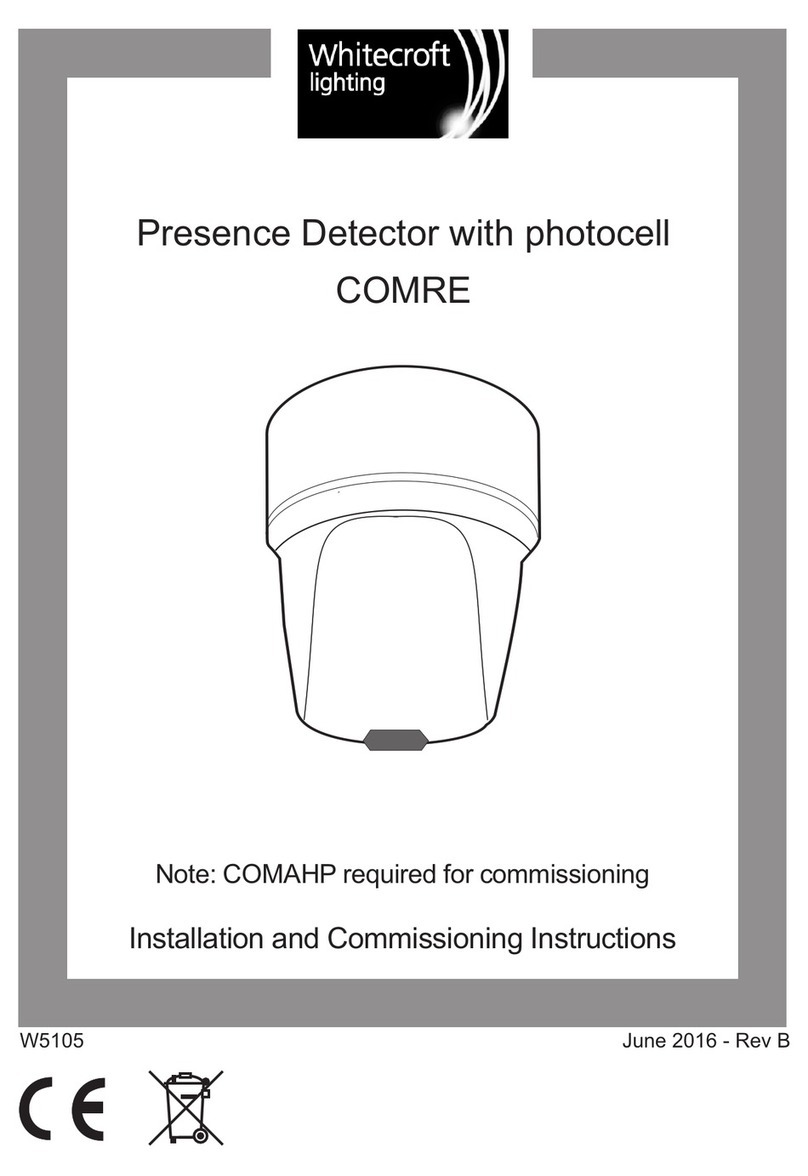
3W4359F
Electrical Connections
These COMRG detectors should be connected in accordance with the diagrams below. Both the Digital Output
and Command Plus connections are polarity-free however other Command Plus products require that polarity be
maintained. The Command Plus cable should be mains-rated, unscreened, twisted pair of at least 1.5mm CSA.
For further information please refer to Wiring Application Guide AN4017. Please note that THETA versions of
these detectors for use with the CPDMTHETA 10 Port Hub or CFL variants do not offer Command Plus
functionality and cannot be connected using Command Plus cable.
These detectors are designed to control up to 25 DSI or DALI luminaires, a switched load of up to Amps or a 10
combination of the two. When controlling DSI or DALI ballasts the ballast type must not be mixed. The DSI or DALI
input terminals on the ballasts should be connected in parallel with each other and to the Polarity-Free Digital
Output terminals on the rear of the detector. Each DSI or DALI luminaire is controlled completely by its digital input
and therefore would normally have a permanent power supply. Turning the power off to some lights within a control
circuit will not have affect the operation of those lights that remain powered up and under the control of the detector.
When switching via the volt-free output multiple detectors may be connected in parallel provided the controlled
load does not exceed Amps. If digital ballasts are also being controlled the digital outputs from each detector 10
must not be mixed even if they are of the same type.
Wiring Examples
Digital
Output
COMM
BUS
These Connections are Polarity-Free
1 2 1 2
Using OneSwitch, Command Plus*, Switched
and Digital Outputs
N
E
L
Permanent
or switched
supply
VOLT-
FREE
OUTPUT
LIVE
NEUTRAL
EARTH
LOAD
(MAX AMPS)10
ONESWITCH
DIMMING
Digital output
Command Plus Bus Connection
(Some Command Plus devices require
that polarity be maintained)
Momentary
push-to-make
switch
Please note that the Earth terminal has no internal connection
and is used for termination only.
Digital
Output
COMM
BUS
These Connections are Polarity-Free
1 2 1 2
Using Switched Output and
Command Plus*
N
E
L
Permanent
or switched
supply
VOLT-
FREE
OUTPUT
LIVE
NEUTRAL
EARTH
LOAD
(MAX AMPS)10
ONESWITCH
DIMMING
Command Plus Bus Connection
(Some Command Plus devices require
that polarity be maintained)
NC
NC
Please note that the Earth terminal has no internal connection
and is used for termination only.
VOLT-
FREE
OUTPUT
NEUTRAL
LIVE IN
EARTH
ONE
SWITCH NC
VOLT-
FREE
OUTPUT
NEUTRAL
LIVE IN
EARTH
ONE
SWITCH NC
LOAD
(Max Amps)10
E
L
N
Permanent
or switched
supply
2 x COMRG In Parallel, using Switched
Output only Any connection not shown is NO CONNECTION (NC)
Relay outputs may be connected together in
parallel to cover larger areas, however the
total load on all combined relay outputs
must not exceed Amps. 10
* Versions with the suffix THETA (for use
with the CPDMTHETA) or CFL do not offer
Command Plus functionality and cannot
be connected using Command Plus cable.
* Versions with the suffix THETA (for use
with the CPDMTHETA) or CFL do not offer
Command Plus functionality and cannot
be connected using Command Plus cable.




























